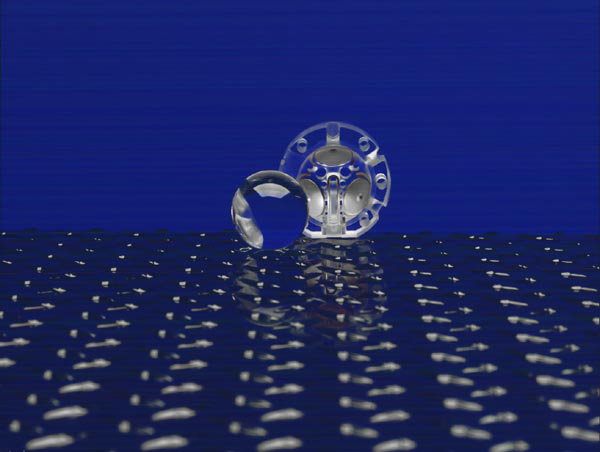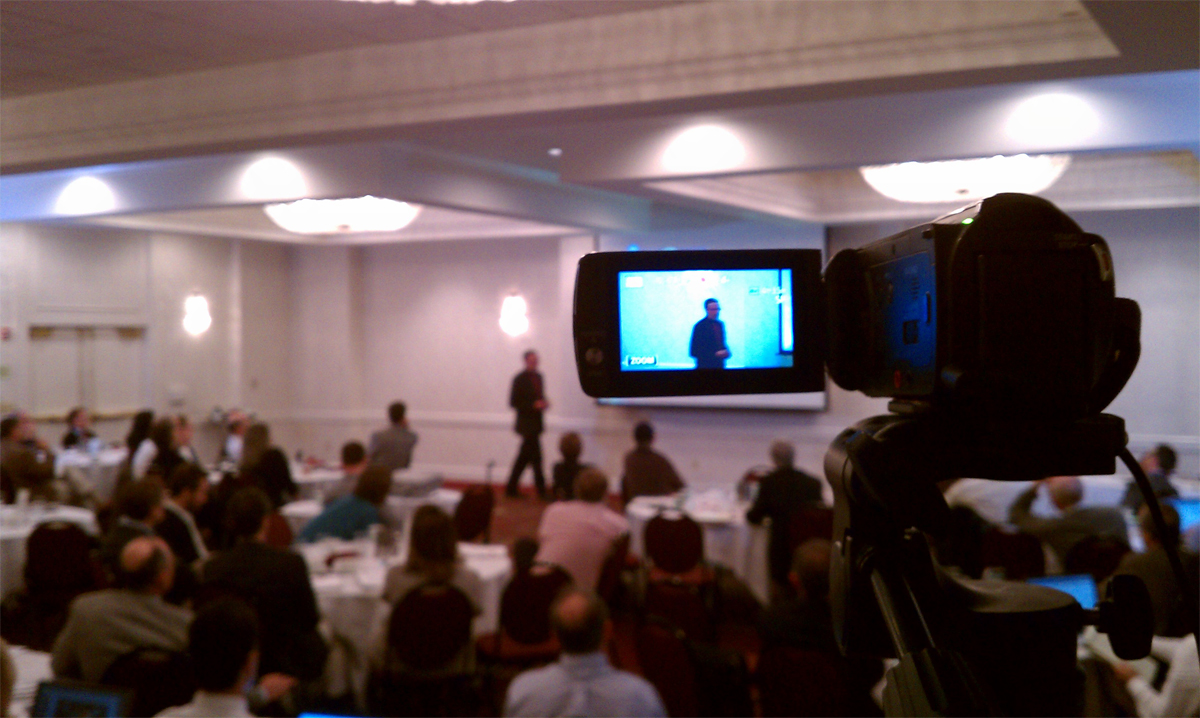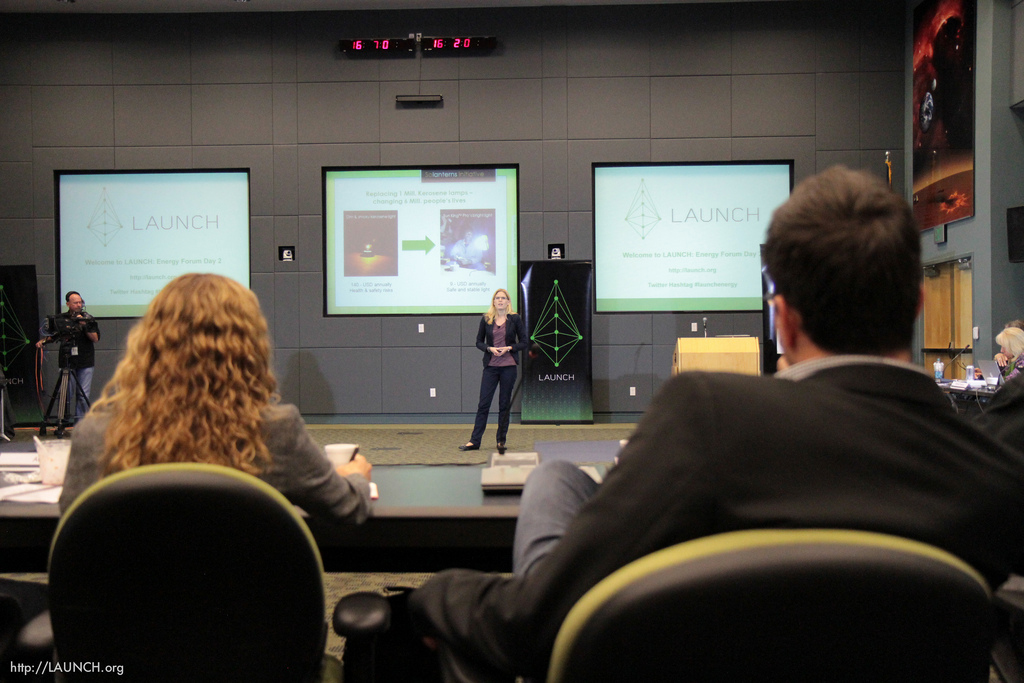November 29, 2011 Vol. 4, Issue 9
Technical excellence is critical for engineering organizations. How one defines, achieves, and maintains it is another question, according to William W. Vaughan of the University of Alabama.
[Editor’s note: This article by William W. Vaughn is based on Technical Excellence: A Requirement for Good Engineering (AIAA-2008-1120), prepared and presented at the 47th
[Editor’s note: This article by William W. Vaughn is based on “Technical Excellence: A Requirement for Good Engineering” (AIAA-2008-1120), prepared and presented at the 47th American Institute of Aeronautics and Astronautics Aerospace Sciences Meeting, January 7–11, 2008, Reno, NV.]
Technical excellence is a requirement for good systems engineering and is the goal of all engineering organizations and individuals, whether in government or private industry, national or international. What do we mean by technical excellence? Most people have their own ideas and interpretation as to what constitutes technical excellence.
Since the intent of this article is to demonstrate the importance of technical excellence relative to systems engineering, it may be good to explore some statements that have been made concerning technical excellence. One author, Teresa Vanhooser, defined technical excellence as an effort to ensure that well-considered and sufficient technical thoroughness and rigor are applied to programs and projects under an uncompromising commitment to safety and mission success.i NASA’s Associate Administrator, Chris Scolese, identified four guiding principles to achieving technical excellence:ii
- Clearly documented policies and procedures
- Effective training and development
- Engineering excellence
- Continuous communications.
According to Scolese, two fundamental attributes must be considered when pursuing technical excellence: (1) personal accountability, whereby each individual must understand and believe that he or she is responsible for the success of the organization’s mission, and (2) organizational responsibility, whereby the organization provides the proper training, tools, and environment.iii
NASA’s Aeronautics Research Mission Directorate is an example of one organization that stresses technical excellence. On the NASA web site, the directorate has noted its commitment to technical excellence, to technical accomplishments that benefit the public, and to its role as steward of the scientific and technical workforce and facilities responsible for civil aeronautics research. In addition, each year the directorate highlights the aeronautics-related technical accomplishments of its scientists and engineers.iv
Some have noted that due to the rapidly expanding technology and science, engineers and technologists in the twenty-first century must have a strong technical background in their fields and understand technology at the interface between traditional fields. They must be creative, skilled problem solvers who can think critically using sound principles and concepts.v
Louis Armstrong is understood to have remarked, “If you have to ask what jazz is, you will never know.” This remark also applies to technical excellence when one tries to quantify its meaning by producing metrics to establish whether a particular objective or goal has been achieved. For example, what provides a measure of the technical excellence achieved by an organization? Number of patents received? Number of professional journal publications? Number of individuals with advanced degrees? Number of engineers versus non-engineers at work? Positive versus negative feedbacks on products? Equipment or system successes versus failures? Profit a company makes?
In the aerospace and defense engineering arena, one can certainly equate organizational technical excellence, and thus good systems engineering, with mission success, at least in the eyes of the public and in the eyes of Congress. In the final analysis, technical excellence is one of the most important systems engineering goals of any engineering organization. How one achieves and maintains it is another question for which there is no simple answer. An organization with recognized technical leaders who have vision, superior technical competence, and the desire to excel will achieve technical excellence. Thus, technical leadership is key for an organization’s success and the ability of the managers assigned to carry out the organization’s mission.
Technical excellence is also related to the strategic management of an organization’s human capital. The technical excellence of its workforce is an organization’s most critical asset in accomplishing its mission. Therefore, continued development of scientific and technical expertise is necessary to preserve an organization’s, and (in the case of a government organization) the nation’s role as a leader in technology.
In an attempt to identify a few outstanding characteristics of managers or management approaches that would ensure a program’s success, NASA, after completing the very successful Saturn–Apollo program, undertook a research study in 1974. The study identified three “tall poles” important to program management:vi
- “Pay attention to detail.” (George M. Low)
- “Leave no stone unturned.” (Wernher von Braun)
- “Be aggressive—not passive.” (Lee B. James)
These philosophies create policies and management methods that are highly conducive to program success or, in other words, technical excellence.
Systems Engineering
The European Cooperation for Space Standardization (ECSS), a component of the European Space Agency,vii defines systems engineering as “an interdisciplinary approach governing the total technical effort to transform requirements into a system solution.” Here, “system” is defined as an integrated set of elements to accomplish a defined objective. These elements include hardware, software, firmware, human resources, information, techniques, facilities, services, and other support elements. The systems engineering process is intrinsically iterative across the whole life cycle of the project and is produced under the leadership of engineering talents with technical excellence attributes. Systems engineering is not an administrative-focused or -led function. Technical excellence is the key to successful systems engineering and, thus, a successful project.
A recent article that addressed new synergies between systems engineering and diminishing manufacturing sources and material shortages made two important points:viii
- Systems engineering principles and best practices should be applied to enhance reliability, availability, maintainability, and sustainability through the entire life of a program.
- Managing major programs effectively requires sound systems engineering.
Accordingly, technical excellence and the associated “tall poles” noted above are integral to ensuring that the application of the principles and best practices of systems engineering to Department of Defense (DoD) programs, as well as to other programs, achieve the intended goals.
Technical Authority and Technical Excellence
In August 2003, the Columbia Accident Investigation Board issued a report documenting its investigation of the February 1, 2003, loss of the Space Shuttle Columbia during reentry. ix One of the board’s recommendations was to “establish an independent Technical Engineering Authority that is responsible for technical requirements and all waivers to them, and will build a disciplined, systematic approach to identifying, analyzing, and controlling hazards throughout the life cycle of the Shuttle System.” With this introduction of independent technical authorities, the board placed further emphasis on the development and identification of technical excellence within NASA’s workforce.
Technical authority is about ensuring that decisions on technical excellence balance program pressures with technical needs. According to Vanhooser, technical excellence involves thoroughness and rigor of the work performed, along with a commitment to safety and mission success. Obviously, one endeavors to ensure that those people identified as the technical authority for a discipline also reflect the organization’s people with recognized and respected technical excellence in the discipline. Thus, technical excellence is recognized by the individual’s accomplishments and by the products of the organization.
Following the Columbia Accident Investigation Board’s recommendation, NASA implemented an independent technical authority to set and approve technical requirements for all flight programs and projects. The intent was to ensure safe and reliable operations. Technical authority, with the responsibility to execute, was delegated by the NASA chief engineer to specific individuals recognized for their technical excellence.
What are some of the attributes of an organization’s culture that reflect a commitment to technical excellence and, therefore, to good systems engineering? Vanhooser suggests the following:
- Highest-value integrated engineering products
- Continual growth, learning, and diversity of experience
- Technical conscience
- Responsive and technically engaged leaders at all levels
- Shared accountability for successes and failures
- Proactive, engaged, and predictive approach to technical content
- Teams whose members complement and complete each other
- Recognition that engineering requires versatility and mobility to meet the needs of the organization
- Placement of the right person at the right place at the right time
Some Examples of Technical Excellence Initiatives
In 2007, NASA undertook a technical excellence initiative to identify and resolve engineering challenges.x The initiative was designed to provide quality solutions and work that will translate into an agency investment strategy for application to present and future missions. Among the attributes of this initiative are improvement to overall technical capability; development of analysis and testing beneficial to multiple missions, programs, and projects; and advancement to tool/technique capability.
In 2006, the aerospace industry released a position paper that argues for standards based on technical excellence rather than the source of a standard.xi Experts from the Aerospace Industries Association’s Strategic Standardization Forum for Aerospace prepared a position paper on the use of aerospace standards in response to growing concern that certain policies and legislation may be putting the industry—and consumers—at risk.xii The paper argues that the aerospace industry must select standards based on safety, quality, and technical merit, rather than based on which organization developed them. Thus, the paper recognized technical excellence relative to ensuring that the products of good engineering can be achieved.
The philosophy relative to enhancing technical excellence through the interplay of standards and their use on international missions is reflected in the following remarks by Michael Griffin, NASA Administrator from 2005 to 2009:
One aspect of this discussion is the need to set certain engineering technical standards to ensure compatibility and interoperability in our exploration architecture. Analogous to my previous comments about spoken languages for future space explorers, it is important that the engineering standard for NASA’s architecture be specified with the international metric, or SI, standards as the base unit of measure, with English units only by exception when it makes sense for NASA to do so. Thus, we hope for a high degree of compatibility of interfaces and standards, as space-faring nations explore the moon, Mars, and near-Earth asteroids together.xiii
Thus, technically excellent standards, especially engineering technical standards, are crucial to ensuring the compatibility and interoperability of a system’s architecture. Good systems engineering is important to achieving this goal.
Role of Technical Standards
Various endeavors are undertaken to ensure technical excellence and thus good systems engineering. Determining how to measure and ascertain the degree to which technical excellence has been achieved is another matter. Technical standards are an integral part of technical excellence. In this regard, those responsible for the development of technical standards must collaborate closely with the engineering elements within an organization.
The dictionary defines a “standard” as, among other things, “a degree or level of requirement, excellence, or attainment.” It is this meaning that we associate technical standards and their role in technical excellence.
Designers and engineers should be among the most aggressive supporters of strong technical standards. Standardization activities establish engineering and technical applications for processes and practices and, in doing so, enhance all engineering capabilities and promote technical excellence. Thus, they enable designers to not dissipate their energies on the costly exercise of “reinventing the wheel.”
The motivations for technical excellence and the associated development of technical standards vary considerably. One most often sees economic issues as the principal motivation. Applications to regulatory matters are another strong motivation. Among the principal motivations for technical standards are international competitiveness; commodity confidence; safeguards for health, safety, and environment; risk reduction; facilitation of commercial communications; and technology transfer. However, enhancing systems engineering capabilities and technical excellence, although readily recognized as a key motivation, is not often seen in the list of motivations for the development and promotion of technical standards. The American National Standards Institute noted the following:
Within the U.S. standardization system, stakeholders—companies, government agencies, public interest organizations, and individuals—follow the method of standards development and the conformity assessment scheme most appropriate for their particular needs. Rapidly evolving fields have requirements that are far different from those of traditional manufacturers or highly regulated technologies.xiv
Enhancing technical excellence is the key to the nation’s future in the rapidly growing globalization of industry. For the United States to remain competitive and maintain its technical leadership in the world, enhancing the nation’s engineering capabilities will be critical. These capabilities can be achieved only by achieving technical excellence. This is necessary for the education of future engineers and the improvement of current engineers. Technical standards provide a major opportunity to achieve the goal of enhancing engineering capabilities and providing a means whereby technical excellence can be infused into the process, whether by DoD, other government agencies, or industry in general.
Enhancing an organization’s systems and other associated engineering capabilities and technical excellence is an important value of technical standards, especially when coupled with allied information such as engineering lessons learned and experiences with the use of the standard. Such must be the thrust of any viable organization’s technical standards activity. This thrust is reinforced and expanded based on feedback from the engineering staff of the organization, its contractors, and users of its products. This integration is one step toward the goal of significantly enhancing the systems engineering capabilities and technical excellence of the aerospace and defense industry to meet demands for timely, productive, and reliable systems, plus contribute to improved costs.
Not only is the need for technical excellence a significant matter for the aerospace and defense industry, both for government and nongovernment organizations, but it is equally important for all industries. Technical standards are an important element of technical excellence. The role standards play in achieving technical excellence includes the transfer of systems and other associated engineering experiences, lessons learned, best practices, and infusion of new technology for the further enhancement of technical excellence within all organizations. Thus, not only do technical standards support the achievement of technical excellence, and thus good systems engineering, they also enable technical excellence to be passed on to others. Although technical excellence is not easy to quantify, there is no doubt it is readily recognized, both by those involved in engineering activities and by those who are the “customers,” be they public, congressional, or otherwise.
Author Biography
William W. Vaughan is a research professor at the University of Alabama in Huntsville, AL. He is a Fellow and an active member of the American Institute of Aeronautics and Astronautics’ Standards Executive Council, Systems Engineering Committee on Standards plus the Institute’s Space Operations and Support, Management, and Atmospheric and Space Environment Technical Committees. He was a member of the team that developed the AIAA Standardization Program and the team that developed the NASA Technical Standards Program. He has over 40 years experience with the development of aerospace vehicle related design requirements and standards. (Vaughan@nsstc.uah.edu)
i Teresa Vanhooser, “MSFC Technical Excellence/Technical Authority,” NASA Marshall Space Flight Center, Huntsville, AL, May 2007.
ii Chris Scolese, “Four Guiding Principles of Technical Excellence,” ASK OCE, Vol. 1, Issue 4, NASA Headquarters, Washington, DC, February 8, 2006.
iii Chris Scolese, “Technical Excellence: Roles and Responsibilities,” ASK OCE, Vol. 1, Issue 5, NASA Headquarters, Washington, DC, February 24, 2006.
iv See http://www.aeronautics.nasa.gov/te_2006.htm.
v “Engineering and Technology for the 21st Century: Technical Excellence,” Brigham Young University, Provo, UT, March 16, 2007.
vi Konrad K. Dannenberg, Management Philosophies as Applied to Major NASA Programs, NASA-CR-141258, 1974.
vii European Cooperation for Space Standardization, “System Engineering General Requirements,” ECSS-E-ST-10C, http://www.ecss.nl, March 6, 2009.
viii Chet Bracuto, Alex Melnikow, and Ed Zelinski, “New Synergies between Systems Engineering and DMSMS,”Defense Standardization Program Journal, January/March 2010.
ix NASA, Columbia Accident Investigation Board Report, Volume I, August 2003.
x NASA, “RFP for Technical Excellence Initiative Cross-Cutting Issues,” November 5, 2007.
xi American National Standards Institute, “Aerospace Industry Argues for Standards Based on Technical Excellence Rather Than Source,” March 7, 2006.
xii Strategic Standardization Forum for Aerospace, Aerospace Industries Association, “Safety of Aerospace Products Demands Freedom to Select Most Appropriate Standards,” http://www.ssf-aerospace.org/, March 2006.
xiii Michael D. Griffin, “Partnership in Space Activities” (remarks, 56th International Astronautical Congress, October 20, 2006).
xiv American National Standards Institute, Overview of the U.S. Standardization System: Voluntary Consensus Standards and Conformity Assessment Activities, Third Edition, 2010.









